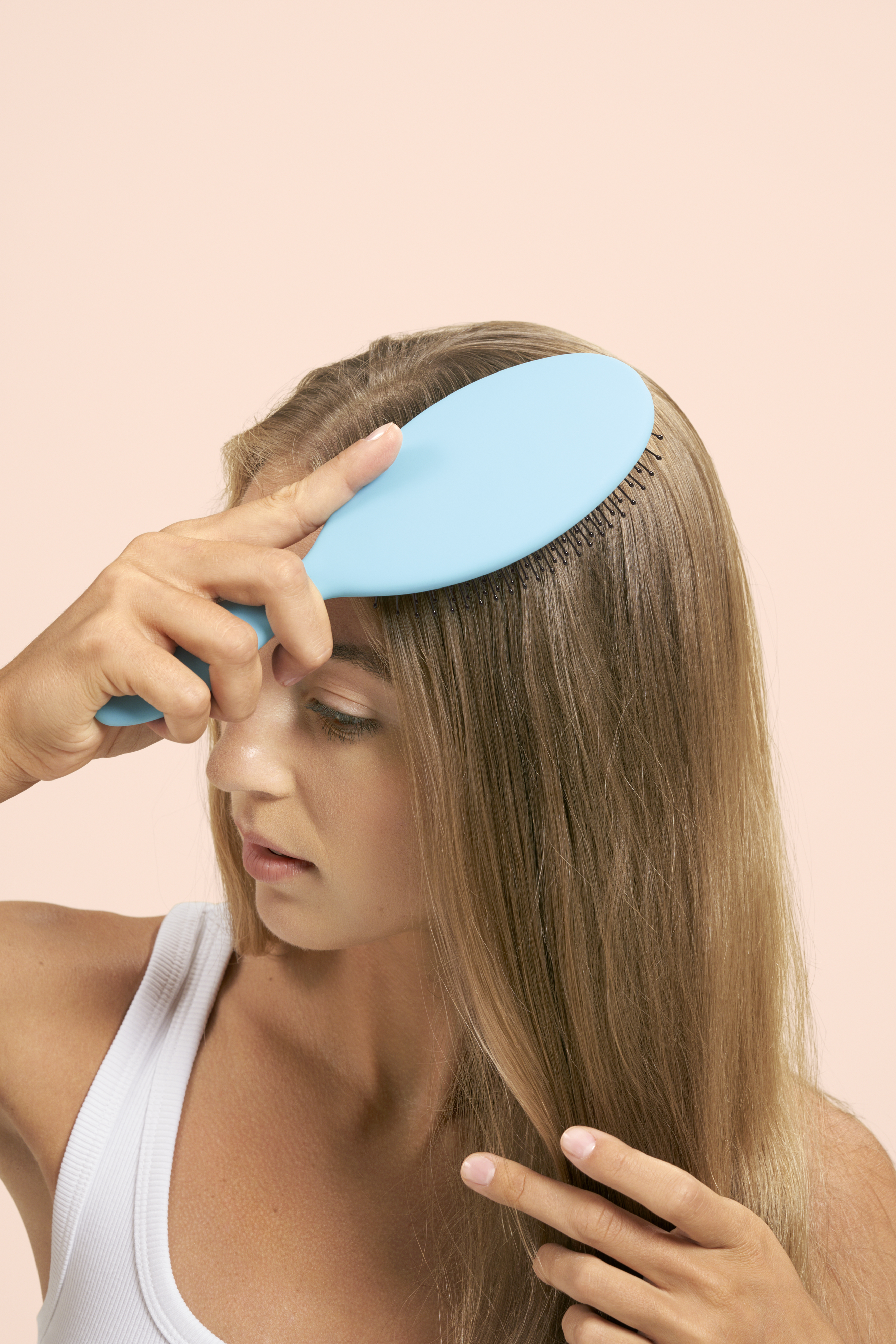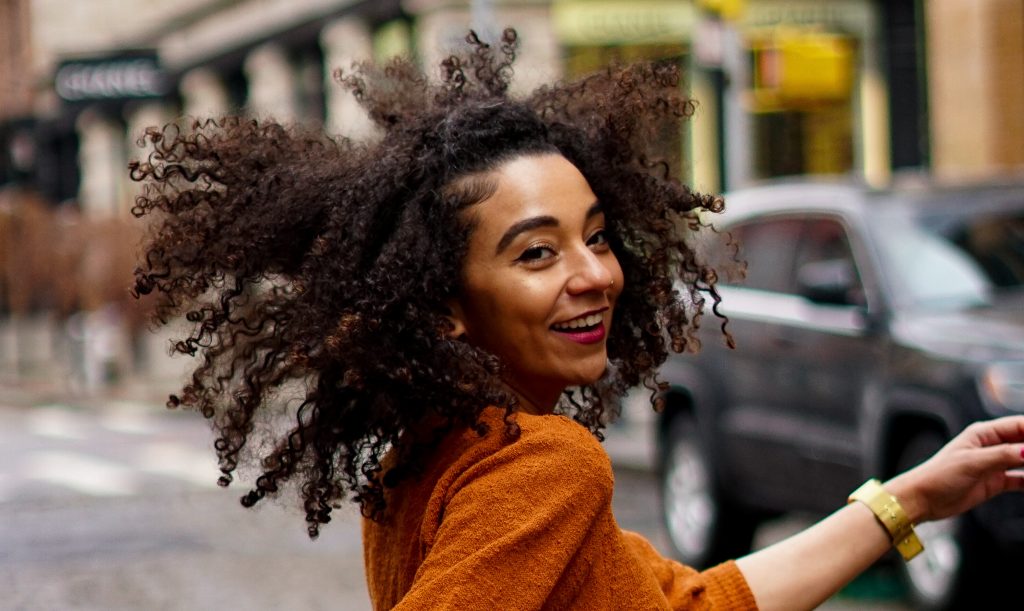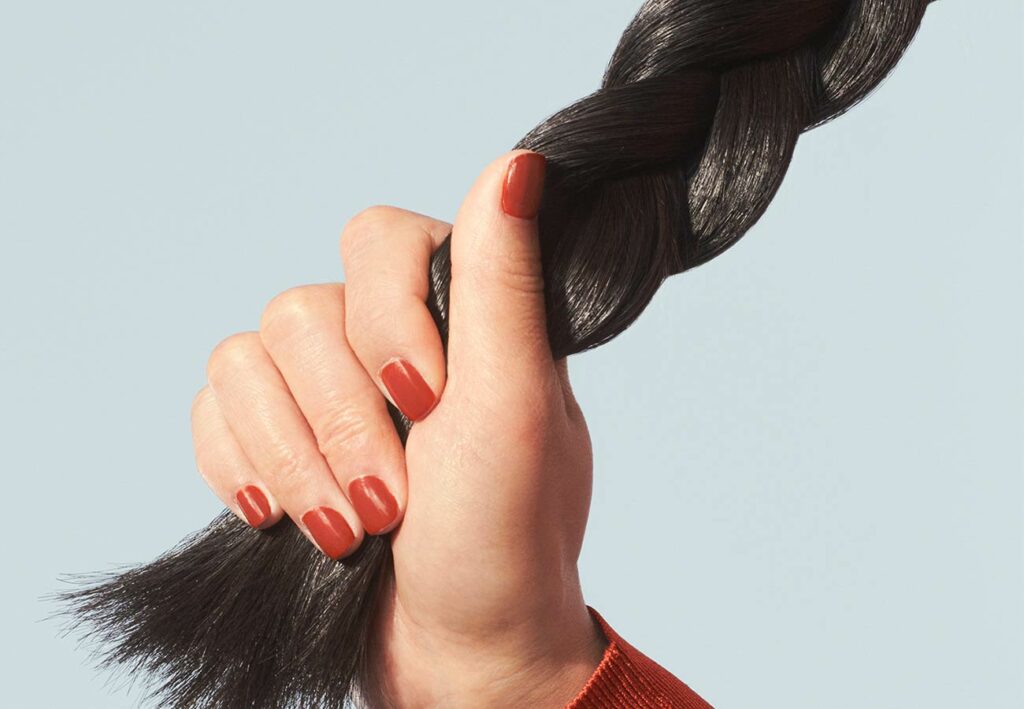How Often Can You Dye Your Hair?
There really is no cookie-cutter answer to this. As you know, one size fits none. But generally, every 4-6 weeks is a standard time between colorings. It really depends on a number of factors, like if you’re changing colors, getting a new color, what type of hair you have, and which products you use.
Don’t worry, we’re going to unpack all of these considerations so you can make an informed decision on your next move. We’ve got your back, so long live colored (and healthy) hair!
How Big of a Change is the Color Dye?
The extent of the change in color you’re making will probably affect how often you’ll be dyeing your hair. On average, hair grows about half an inch each month. If you hold a ruler up to your roots in front of the mirror, you’ll be able to see a noticeable amount of uncolored roots showing after four weeks.
This is where you need to consider how much of a change the coloring is. If you’re a natural dark brunette and you’re going to color it blonde, you may not want that much of a visible difference for your roots. The upkeep of this kind of color change may call for more frequent dyeing and you’ll probably want a touch-up within the 4-6 week timeframe. This is the time to think about if you’re comfortable with the look of roots showing through or if you’d be a little more high maintenance.
If you’re making a more subtle change in color, such as only slightly darker or lighter, you can probably get away with going closer to eight weeks between treatments.
Another option is semi-permanent hair coloring— it’s much gentler on the hair because it only coats the outer shaft. These treatments also don’t contain ammonia, alcohol, or bleaching ingredients, which means they won’t cause your hair cuticles to open and your hair will be able to retain more of its natural moisture.
Are You Going for a Whole New Color?
If you want to completely change the color of your hair, let’s say, red to brown or blonde to brown, it’s technically best to let the last color grow out completely. This is because natural hair is better at absorbing color. Adding a new color into already color-altered hair is likely to result in a sub-optimal outcome that won’t be exactly what you were going for.
If your hair is natural right now, think about if you’re ready to commit to the upkeep of a new color by regularly touching up the roots, or if you’re ok with letting it grow all the way out before making another change. Of course, you still can hop from color to color, your hair will just need a little more care to help it look the way you want it to. If this sounds like you, read on to learn about how to keep color on point and hair healthy throughout the transitions.
Let’s Talk Bleaching.
Bleaching hair is probably the most drastic, and unfortunately, most damaging alteration we can make to our hair. That being said, it can also be the most fun and exciting change to make. We’ve probably all thought about it before—either as the final look or as a preliminary step for a color transition. Here’s everything you need to know about bleaching.
How It Works.
Bleaching uses chemicals to remove the pigment of your hair through the process of oxidation. There are different kinds of bleaches with different formulas, but they all basically do the same thing. Bleaches have an alkaline agent that will open up the hair cuticle, allowing for an oxidative agent to penetrate the hair’s cortex and dissolve the natural color. The length of time you leave the bleach in will affect how much of your natural color it dissolves and how light (and closer to “white”) your hair will be afterward.
The Damage.
Because bleaching penetrates the outer layer of the cuticle, hair becomes highly vulnerable to losing natural moisture through its now penetrated pores. This directly affects the porosity and elasticity. Hair that is more porous means that the cuticles are more open, and more open means more opportunity for natural oils, hydration, and natural fatty acids to escape. This is why bleached hair commonly appears dry and frail.
So How Often Can You Bleach?
Bleaching is 100% permanent— it’s a one-way road and there’s no going back. If you bleach your hair, it’s going to stay like that until it grows out.
Is the platinum blonde or bleached look what you’re going for? Depending on how dark your natural color is, you may need to bleach it two or three times to achieve this. It will be important to use products that are specially designed with extra hydration and natural proteins to help keep your hair looking healthy and hydrated. A hair mask and deep conditioner are products you’ll want to pay special attention to that will help your hair store (and restore) as much moisture as possible.
Whether the bleached look is your desired outcome or you’re using it to create a base for a different color, it’s probably best to avoid bleaching more than once before hair grows out.
Preventing Damage
There’s no getting around the fact that any type of coloring is damaging to hair. It’s tragic, we know. But there are ways you can prevent damage and keep it to a minimum.
Hydration, Hydration, Hydration.
Any type of color dye will affect the hydration of your hair, so to keep hair looking strong and healthy, hydration will be your new best friend. Using intense conditioners and hair masks will help your hair “recover” from the stress of coloring.
Look for ingredients like natural oils, collagens, and proteins that will deeply condition, strengthen hair’s outer layer, and work to repair core nourishment. We believe that natural is best and that’s why we use only the cleanest ingredients that are backed by science to provide pure and ultimate hydration.
Turn Down the Heat.
Heat is the number one perpetrator for killing hair’s hydration. Now that hair is colored, we have to focus on keeping it as hydrated as possible so it can be voluminous, strong, and shiny. Try to cut back on heat as much as you can, both with styling tools and water temperature.
Keep straightening and curling to a minimum. When you do style with heat, use a heat protector spray beforehand to avoid further stress and damage to the hair cuticles. Leave-in conditioner can be applied after showers to provide extra hydration and a protective layer over hair before any further styling. After a shower is the best time for a product like this because wet hair is highly porous – making for the best time to give it extra hydration and nourishment. Our leave-in conditioner is 100% color safe— it won’t fade dyes and it will work to keep your color vibrant and polished looking.
Use Products Created for Colored Hair.
Not all products are created equal. We at Prose take a radically custom approach and create products that fit you and you alone. Take our consultation and let us know how you’ve dyed your hair and how you’re going to be maintaining it. We’ll create a personalized formula that will hydrate deeply, preserve color, and help prevent damage.
As we said earlier, one size fits none, and when you’re dyeing your strands, hair care designed for “the masses” isn’t enough. Everyone deserves extraordinary care and making products that are custom-tailored for you and your hair is how we help everyone get their very best individual results.
Colored Hair Can Be Healthy Hair
The heart wants what it wants and if your heart wants a different hair color, go for it. The takeaway? It’s all about the aftercare: hydration, hydration, hydration.





